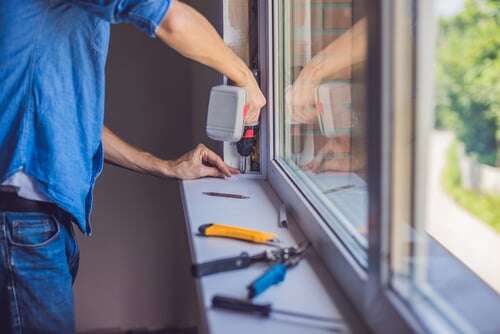 If you've had a heating system service company perform an annual maintenance check on your furnace, if you've found and fixed air leaks around your doors and windows, and if you're vigilant about maintaining your furnace filter, you may feel like you're fighting a losing battle if the air in your home still doesn't feel as warm or comfortable as it should.
If you've had a heating system service company perform an annual maintenance check on your furnace, if you've found and fixed air leaks around your doors and windows, and if you're vigilant about maintaining your furnace filter, you may feel like you're fighting a losing battle if the air in your home still doesn't feel as warm or comfortable as it should.
The likely culprit? Your ducts, which distribute warm air to the rooms in your home via the furnace.
The U.S. Department of Energy estimates that in many American homes, as much as 20 percent of that warm air never arrives at its destination; it seeps right out through cracks, holes and poor connections. If it's difficult for you to imagine this degree of energy loss, imagine propping open your front door on a cold day while your furnace is working hard to keep it warm indoors. You would remove that obstruction in a hurry.
Improve Your Comfort
In the same way, you can preserve the energy you're paying for and improve your indoor air comfort by sealing and insulating the ducts in your attic, basement, crawlspace and garage. You also stand to reduce the risk of backdrafting, which can occur when gas from your furnace is drawn back into your home rather than funneled outdoors. Sealing the leaks in the ducts can significantly reduce this risk.
At this point, you might be asking yourself a logical question: Is duct sealing and insulating a DIY project I can handle myself or should I call a heating system service company for assistance?
There are a few questions you can ask yourself to help guide yourself to the answer. In fact, these questions apply to any DIY job – from electrical repairs to working on your heating system:
- Do I enjoy DIY projects?
- Do I possess the necessary information and skills required to seal and insulate my ducts?
- Do I have the proper supplies? If not, do I know where to purchase them?
- Do I know how to address an unexpected problem?
Even if you've answered “yes” to all of these questions, you might wish to approach duct sealing and insulating as a joint effort between you and a trustworthy heating system service company.
Identify the Trouble Spots
You can get started – and shore up your confidence level – by identifying the trouble spots in your ducts. It stands to reason that the older your home, the more disrepair you're likely to find. Deterioration is normal, so don't be surprised. Remember that all duct damage can be repaired. So grab a flashlight and look closely for:
- Ducts that are disconnected, either partially or completely.
- Ducts that have crumpled or collapsed.
- Ducts that are dented or exhibit kinks.
- Tape on the ducts that is loose, dangling or withering.
At this point, you might be surprised to learn that duct tape should not be used to seal ducts. Call it a misnomer, but duct tape:
- Does not properly seal duct joints.
- Suffers from a short lifespan.
- Responds poorly to temperature changes.
Duct tape might have saved the Apollo 13 crew – they used it to make an emergency repair to return to earth – but metal tape or mastic sealant should be used to seal ducts; R-6 duct insulation should be used to insulate them.
A heating system service company like Experts In Your Home can step in and secure metal ducts with sheet metal screws and secure flexible duct connections with metal or plastic bands. Contact us today and together, we'll fight and win the battle against the leaky ducts in your home.
Have you had your heating system serviced lately? Download the free check list below to use in any season!








